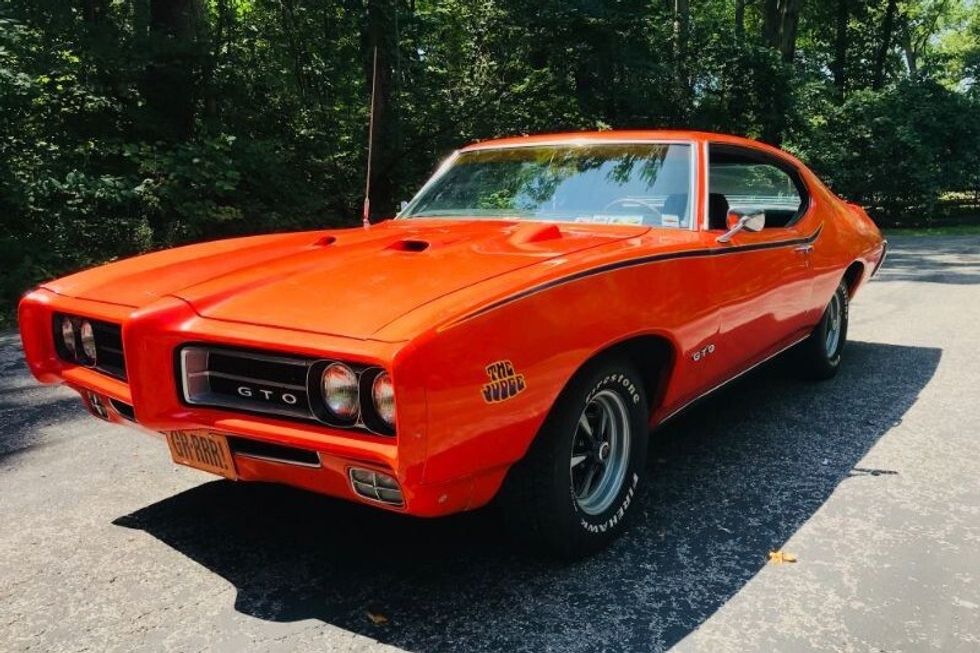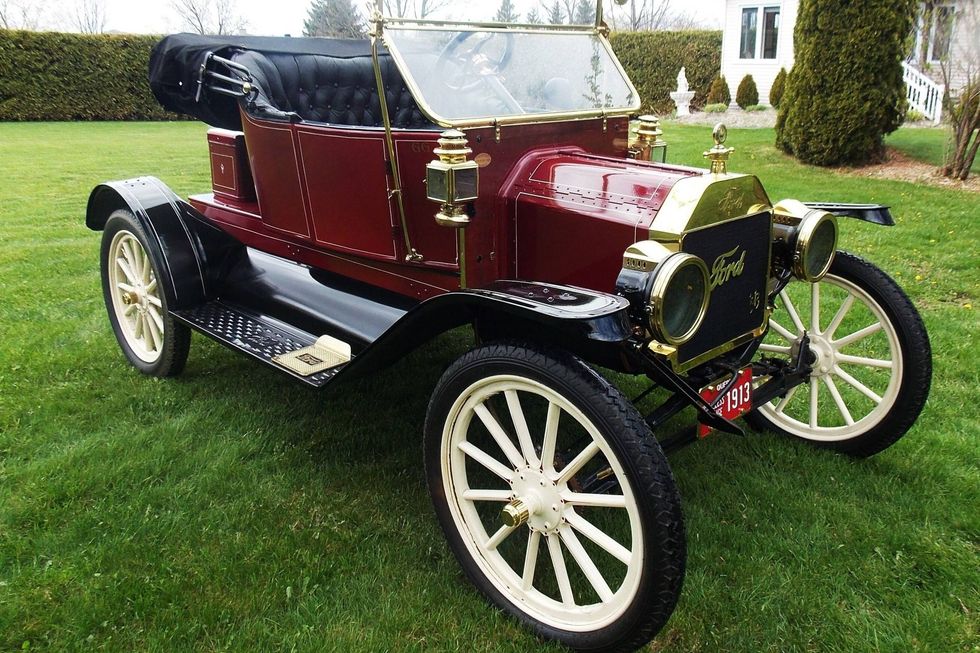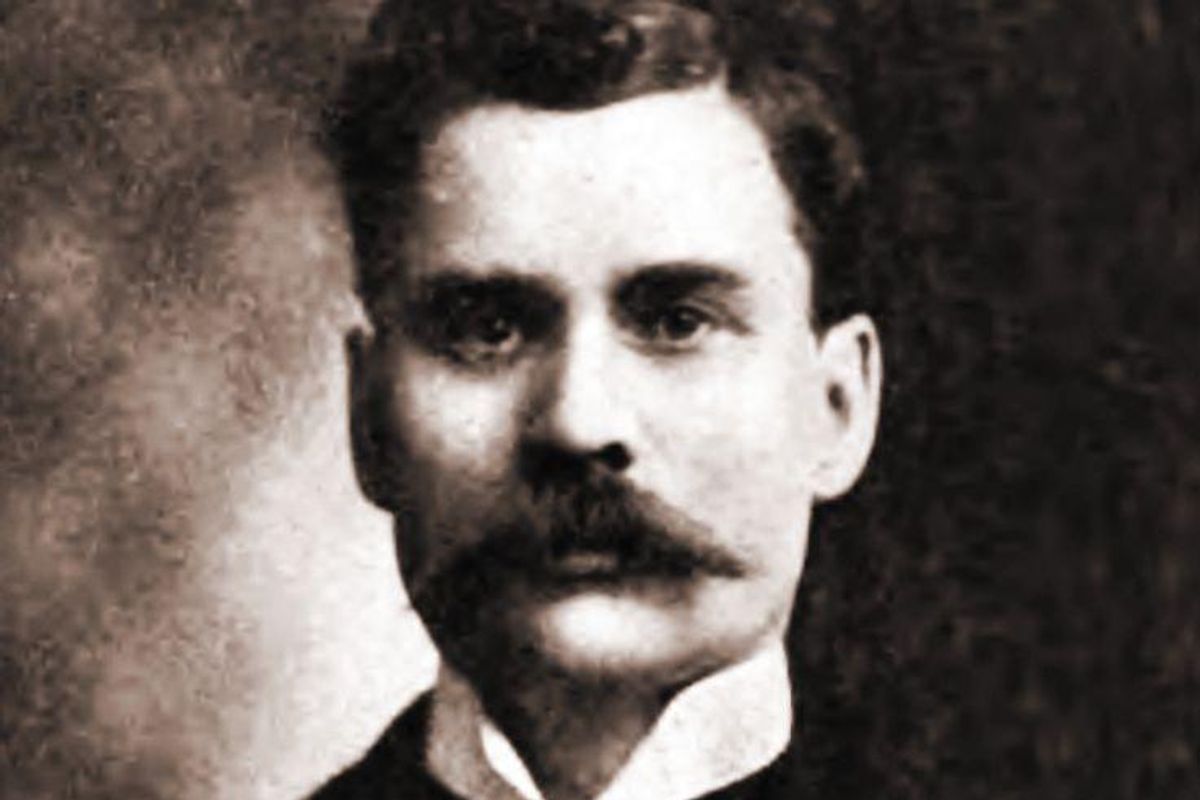Buy
Resources
Entertainment
Magazine
Community
In This Article
Category:
Classics
THE NAME "STROMBERG" has gotten a lot of traction as hot rodding's most famous carburetor, the 1930s-era EE series--better known as the "97"--has once again become a hot commodity. In fact, it's even back in production.
Stromberg the man, however, is less well known. Like Harry Tillotson, William Carter and the Holley Brothers, Stromberg's eponymous mixer of fuel and air has long outlived the man himself. He is actually far better remembered by enthusiasts of vintage telephones and radios, thanks to his lifelong involvement with those products as well.
Alfred Stromberg was born near Stockholm, Sweden, on March 9, 1861--slightly over two years before Henry Ford. He would grow into a "little, unassuming man with sharp features and intelligent eyes ... with great will power, with nerves and muscles of steel," according to the Svenska Tribunen, a Swedish-American newspaper of his heyday. Like Ford, he would get his start working in one of the great establishments of a famous 19th century inventor, though not Thomas Edison but Alexander Graham Bell.
As a teenager, Stromberg started his career as an electrician, and by the age of 18 he had risen to the position of foreman at Öller & Co, Stockholm-based maker of telegraph instruments, telephones, and sewing machines. It was while working for Öller & Co that he installed the first battery transmitter to be used in Scandinavia.
When the U.S.-based Bell Telephone Company established itself in Stockholm, Stromberg joined that organization, where he performed much of the work installing the Stockholm telephone exchange as well as several of the telephone exchanges in Northern Sweden. Around 1884, Stromberg took the opportunity to join Bell's Chicago office. In 1886, he married a fellow Swede, Ellen (or Ella) Johnson, with whom he had four children.
One story from this time, likely apocryphal but too good not to share, is that upon his arrival in the United States, the ambitious young immigrant found himself short of funds and attempted to obtain a loan of 25 cents. Denied such an investment, Stromberg was said to have vowed never again to attempt to operate on credit.
Over the next five years, Stromberg worked for Bell, inventing refinements to telephone equipment on the company's behalf. In 1890, he set out on his own, carrying his electronic expertise to the Thomson-Houston Co. and the Chicago Electric Protective Co. for the improvement of burglar alarms.
When the Bell telephone patents expired in 1893-'94, Stromberg and another Swedish ex-Bell employee named Androv (some sources say Anders) Carlson joined together to form the firm of Stromberg-Carlson, producing telephone equipment for companies outside the Bell System. One of the biggest customers of Stromberg-Carlson was the Rochester, New York, telephone company, and in 1905 a group of Rochester investors purchased the concern, leaving both Stromberg and Carlson wealthy men. Stromberg-Carlson would later expand into radio and phonograph production, including car radios. It still exists today as a subsidiary of Genband U.S. LLC, still producing, in essence, telephone equipment.
The energetic Stromberg was not content to retire in his 40s, however. After assisting in Stromberg-Carlson's re-establishment in Rochester, he returned to Chicago and was soon involved in the Perry Time Stamp Company and the Goldberg Motor Car Devices Manufacturing Company. At Perry, which soon bore the name Stromberg Electric Chronograph Company, he oversaw the creation of an automated time-stamp system, which became familiar to hourly workers everywhere. That company is now known as Stromberg Office Products.
At Goldberg, renamed Stromberg Motor Devices circa 1909, Stromberg (and his old friend Carlson) brought much-needed capital to the designs of John Goldberg. A large factory was erected in Chicago, and the company's one-a-day production of carburetors for automobiles, motor boats and aircraft, was soon increased to one per minute.
Stromberg's carburetor operation would prove just as successful as his telephone and time-clock efforts. The carburetor company was purchased by Bendix Aviation in 1929, shortly after the death of Carlson. Stromberg himself died in 1913, one day short of his 52nd birthday. The original Stromberg carburetor company would produce its last units for U.S. consumption in 1974, but the name and the famous 97 design live on with the revived Stromberg Carburetor company of Suffolk, England.
Recent
On this episode of Repair2Rev, join us as Riley and Dane share invaluable tips and tricks on tackling one of the most crucial aspects of vehicle maintenance: the brakes. From the essential do's and don'ts to the step-by-step process of replacing and upgrading front disc brakes, you'll learn everything you need to know to keep your ride safe and reliable.
As they move to the rear of the truck they delve into the intricate world of rear drum brake systems, demonstrating the art of rebuilding and restoring this often-overlooked component of classic trucks. And to ensure your truck stops on a dime, they'll wrap up the episode with a comprehensive guide to bleeding the brake system, leaving no stone unturned in their quest for peak performance. Knowledge gained here will help you find your bargain buy without the anxiety of lacking repair tips. Hemmings is the ultimate destination for finding your perfect ride. Head to Hemmings.com to register and start your search today.
The British motor industry is well represented on this week’s round up of successful sales on Hemmings.com. The strongest listing went to an LS V8-powered 1997 Land Rover Defender 110 custom that outperformed the market and looked to be able to well outperform a stock 110. A 1978 Aston Martin AM V8 found a new home via auction, the same fate experienced by a V12-powered 1972 Jaguar XKE Series 3 roadster. The original Jeep Grand Wagoneer was perhaps the first luxury SUV and the 1988 example sold on Hemmings.com featured low-mileage and excellent overall condition. There are few muscle cars are instantly recognizable as a Carousel Red Pontiac GTO Judge, like the 1969 model detailed below. Finally, we look at a restored 1913 Ford Model T Runabout sold from a Canadian-based collection.
For the week of May 12 through May 18, a total of 61 listings crossed the Hemmings Auctions block. Including Make Offer listings of previously ended auctions, a total of 40 cars were sold, resulting in a net 66% sell-through rate. An additional 29 cars were sold via direct Make Offer listings.
You can keep abreast of the latest consignments by subscribing to the daily Hemmings Auctions email newsletter.
1978 Aston Martin AM V8

Reserve: $80,000
Selling Price: $84,000
Recent Market Range: $45,000-$80,000
Aston Martin produced some version of its V8-powered saloon from 1969 through 1989, though we are more likely to refer to the body style as a coupe on this side of the Atlantic. A beefy 5.3-liter DOHC V8 with multiple carburetors and a stout Chrysler-sourced TorqueFlite automatic very much gave the models a muscle car vibe, albeit one made with fine leather upholstery and thick wool carpets. This silver on red 1978 Aston Martin AM V8 Series III saloon, which traded hands last year via online auction for $46,988, achieved one of the highest prices seen in recent years for a coupe equipped with a standard-specification engine, particularly outside the U.K., where values are typically stronger.
1988 Jeep Grand Wagoneer

Reserve: $63,000
Selling Price: $68,775
Recent Market Range: $54,000-$75,000
Perhaps no other American vehicle has combined class and off-road capability quite like the original Grand Wagoneer, the trailblazing luxury SUV that was produced by Jeep for almost three decades. This 1988 Jeep Grand Wagoneer was submitted with just 27,417 miles showing on the odometer and plenty of notes from the seller indicating the original condition of the vehicle and all of its major components. The undercarriage, interior and engine bay photos all appeared to show an exceptionally clean example, which is notable for a rust-prone vehicle that has been in the Northeast since new. The net sale price, achieved with the 39th bid, was in line with market expectations for this very collectible vehicle.
1997 Land Rover Defender 110

Asking Price: $150,000
Selling Price: $157,500
Recent Market Range: $80,000-$150,000
The Land Rover Defender market shows no signs of slowing down, particularly as more and more examples are allowed into the U.S. via the DOT’s 25-year rule for previously banned imports. Likewise, there is a burgeoning market for what can best be described as restomodded examples, like this 1997 Land Rover Defender 110, which was powered by a modern GM LS3 V8, the same powerplant found in later C6 Corvettes. The list of what was original to this SUV might be shorter than what was changed, given the comprehensive nature of the build. Achieved via a direct Make Offer listing, the net sale price of this Land Rover was at the very top end of recent market activity for such customized Defenders.
1969 Pontiac GTO Judge

Reserve: $54,000
Selling Price: $52,500
Recent Market Range: $46,000-$62,000
This 1969 Pontiac GTO Judge ticked all the right boxes: matching numbers with photos verification of the partial VIN stamping on the engine block of the original Ram Air III V8, Muncie four-speed manual transmission, PHS documentation, and that classic Carousel Red finish and Judge decals. It looked to be in excellent overall condition, but it also appeared to have been driven and enjoyed some in recent years, with some signs of wear. And the net sale price, achieved via post-auction Make Offer listing, reflected the condition and authenticity of the car. A concours-level example, or one with a rare Ram Air IV engine for example, would likely command a premium over this one.
1972 Jaguar E-type Series III Roadster

Reserve: $65,000
Selling Price: $69,825
Recent Market Range: $78,000-$115,000
The final iteration of the Jaguar XKE was a bit larger than the original and not as precisely focused on its sporting nature. Rather, with a big V12 under the hood, it was more of a GT car. This 1972 Jaguar E-type Series III Roadster appeared to have some minor wear and tear and signs of road use, but it made up for any shortcomings with what appeared to be an abundance of authenticity. The seller noted that the exterior finish, interior upholstery and engine were all original. Reflecting the low number of owners and the car’s years sitting in a museum, the odometer reading of just over 30,000 miles was also believed accurate. While the net sale price was below market expectations, it was not too far off.
1913 Ford Model T Runabout

Reserve: $25,00
Selling Price: $26,250
Recent Market Range: $22,000-$36,000
There has never been a shortage of early Fords at Hemmings, dating to the earliest days of our magazine. Like any other vehicle, the most desired examples in the best condition will always attract the bidders. This 1913 Ford Model T Runabout appeared to have been restored to high level and showed only minimal signs of use. It was also equipped with an electric starter. The maroon body, black fenders and white spoke wheels nicely complemented the button-tufted black vinyl seat. The undercarriage appeared to be exceptionally clean, indicating little use for the car that was said to come from a Model T collection. The next sale price was well within the going market rate for an open-top, two-seat, early Model T.
Keep reading...Show Less
Interested in a new or late model used car?






